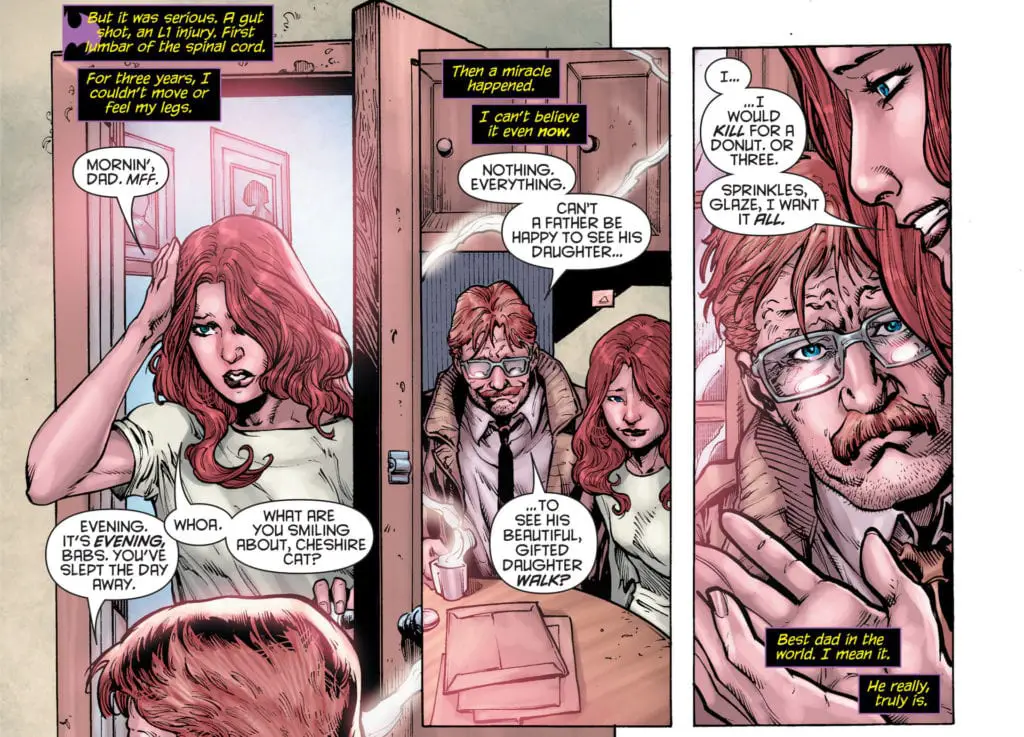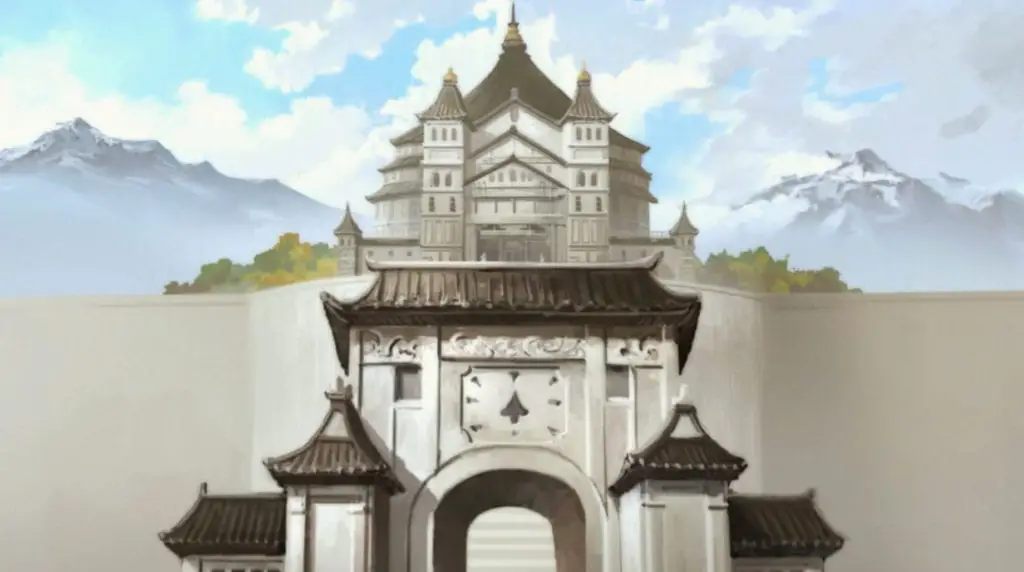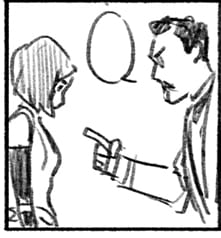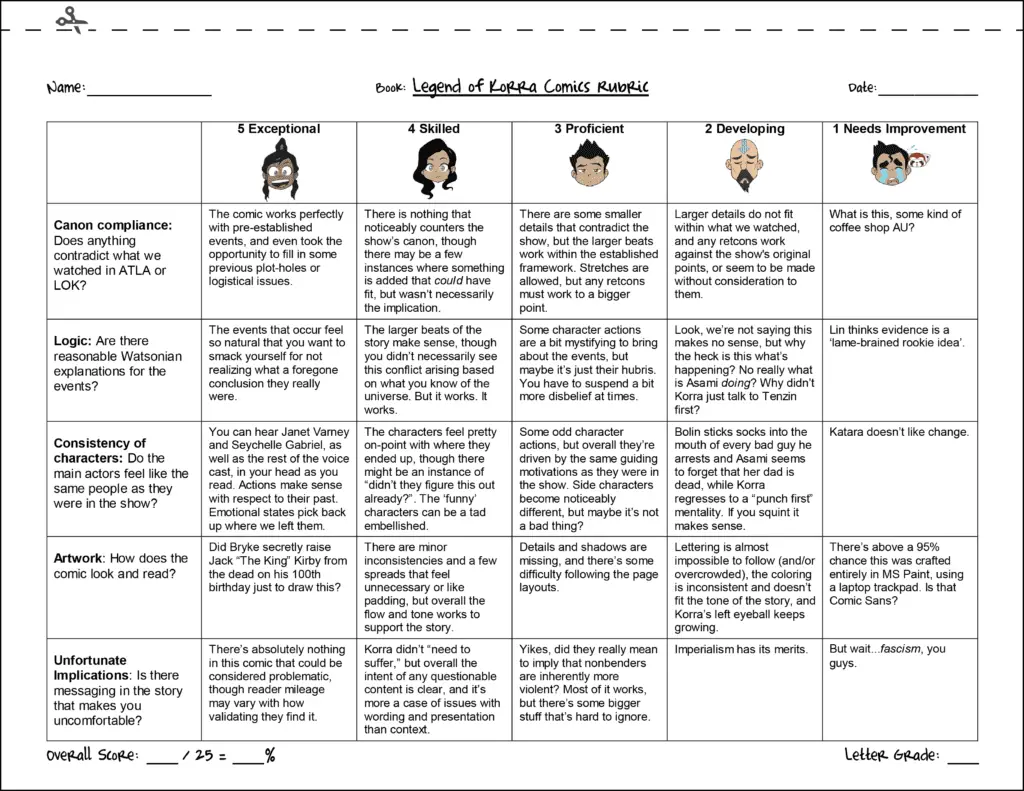The days are getting longer, the sun is setting later, and with this reality of summer lurking around the corner, another reality is beginning to set in: we’re getting Turf Wars. Like…actually getting it!
That’s right, folks, in two short months we are going to be treated to the sequel comics of the wonderful, intelligent, transgressive show The Legend of Korra, the staple go-to favorite of many here at the Fandomentals. These comics, promised by co-creators Bryan Konietzko and Michael Dante DiMartino a few months after the show’s conclusion in 2014 (omg we’re old), have more or less been dubbed by the fandom as “the Korrasami comics.” Frankly, the original description provided to us is responsible for that:
“Turf Wars begins with Korra and Asami leaving the spirit world and returning to Republic City only to find political hijinks and human vs. spirit conflict, as a pompous developer plans to turn the new spirit portal into an amusement park, potentially severing an already tumultuous connection with the spirits. In addition, the triads have realigned and are in a brutal brawl at the city’s borders where hundreds of evacuees have relocated. In order to get through it all, Korra and Asami vow to look out for each other—but first, they’ve got to get better at being a team.”
Though there’s much to celebrate and analyze from the show, there is no denying that the burgeoning romantic relationship between the titular protagonist Korra and her girlfriend Asami Sato was an incredibly exciting and validating ending—one that could also do with more exploration. You see, as boundary pushing as it was for TV at the time, the show did have to lean heavily into visual cues and implication for some of the romantic beats, and these two women were so busy battling a technocratic fascist, that we got about two minutes for them to set up their life together in the final episode. Of course we want more.
More we are getting, with Turf Wars Part 1 dropping into local comic book shops on July 26th, and available digitally/wherever else books are sold two weeks after. Yet even without waiting that long, over the past few months we have been kindly given love kernels by the creative team involved with the comics; most notably from artist Irene Koh and writer Michael Dante DiMartino.
The newest interview came out over the weekend, with Koh providing some details about the main tension of the the comics. This came after an incredibly early extended preview, numerous panels/thumbnails posted on Koh’s personal blog, and a couple of other interviews/cons along the way.
While Griffin and Kylie, your illustrious Turf Wars reviewers ‘round here, cannot wait to jump face-first back into the world of Avatar (especially with a premise that is unlikely to accidentally endorse imperialism), there is no denying that along with the growing excitement, there’s a growing…apprehension. Because that’s what we do. We overthink things and try to predict every single outcome and the meaning attached to each one.
Therefore it’s time for us to lay our dreams—and fears—all out on the table, so that come July we can approach the thing objectively and free of anxiety.
“The Longest of Longshots”
Let’s get the elephant koi out of the way here: anyone who is familiar with the two of us knows that we have a very specific penchant with what we find engaging to explore. And that penchant heavily revolves around one Asami Sato. One Asami “the angry one” Sato at that, though that’s, ya know, canon. We find her to be a wonderfully deep character who very much benefits from the written medium since she is so internally driven. Comics should (in theory) allow the audience to get a far better look inside her head and bring more depth to her scripting. Heck, it works for Babs!

We recognize that what we want isn’t a good way to judge the quality of a story. It would be entirely subjective, without any sort of critical thought applied. Sure, if the comics deliver us spread after spread of Asami’s introspective thought bubbles eating the entire page, we’d almost definitely seal clap, and good for us. But thankfully we do have higher standards when it comes to judging a piece of media.
That said, we do think that the (mostly) positive reception to Korrasami in the first place was based on a few key factors—factors that are integral to the relationship as a whole, as well as any narrative built around it.
Kylie’s talked about this before, but what was so unique about Korra and Asami’s relationship was the way in which it developed and felt authentically queer and positive. You see, Bryke wrote this romance with the assumption that they would not be allowed to explicate it within the show’s run. Konietzko specifically said that they scripted Korra and Asami to be on a trajectory that “could be heading towards a romance,” but as they got deeper into the development, they realized that they actually could have the on-screen representation they wanted, so they went for it. Well…it fell “just short” of the representation they would have preferred, according to Konietzko, but that’s because he’s an amazing advocate.
Because of these constraints, the team was forced to explore different methods of storytelling outside of their comfort zone, and methods that relied more on quiet emotional development and visual/musical cues in lieu of dialogue or more commonly employed romantic tropes. And what Bryke didn’t realize was that in doing so, they were speaking specifically to a queer experience, because the external constraints they perceived in the development process mirror the constraints dealt with on a societal level by those in that audience.
Further, the focus had to be on Asami and Korra’s friendship and mutual emotional support rather than attraction or jealousy. It’s not that we didn’t love Aang getting all pissy when watching Ember-Islands-Players-Katara say “he’s like a brother to me!” (just kidding…that was terrible), but we did find something more refreshing and validating about the scenes where they’d comfort one another. Asami was the only person Korra let herself be vulnerable around following a major trauma, and Korra was the only person we saw Asami discuss the death of her father with. It’s, you know…nice. Realistic, even. And you can honestly see the love and trust they have in one another, which was built over the run of the series.
In essence: because Bryke couldn’t “tell” they had to “show.”
This also meant that Korra and Asami’s romance wasn’t really a plot point. It just developed without ceremony alongside the main plotlines, where these two women battled anarchists and fascists and robots and sand sharks together in perfect harmony. That’s what was exciting. That’s what worked, and that’s what we (and the fandom, we assume) loved and continue to love two and a half years later.
“But I haven’t even told you your backstory!”
For that reason, moving into the comics, we would be disappointed to see any fundamental change in their dynamic. There’s also the fact that Korrasami works on a very deep, thematic level for the series as a whole. The main theme they highlighted through it was balance. Korra is an all-powerful bender with a sheltered background who represents ancient wisdom and the spiritual, while Asami is a disempowered nonbender from the world’s cultural hub who represents change, innovation, and material solutions. And the 1%. Oh, Asami.

Because there’s just *SO MUCH* going for them here as complementary forces, there’s a ton of potential in these comics. So we will admit that after getting the official official description, we were a bit thrown for a loop:
“Relishing their new relationship, Korra and Asami leave the spirit world…but find nothing in Republic City but political high jinks and human vs. spirit conflict!
A pompous developer plans to turn the new spirit portal into an amusement park, potentially severing an already tumultuous connection with the spirits. What’s more, the triads have realigned and are in a brutal all-out brawl at the city’s borders—where hundreds of evacuees have relocated!”
The amusement park idea was always strange to us, but if there’s one thing we’ve learned to be wary of after watching seven seasons of Bryke’s material, it’s that their concept of “political hijinks” and business leave something to be desired, and can even overshadow otherwise well-scripted character arcs. We also found it curious that there was no mention of Asami’s dad, or really any plotline relevant to her specifically, but rather a spirit conflict, and a triad conflict. Something that applies to Mako, Bolin, Korra, Lin, Tenzin…pretty much everyone not Asami, unless she clashes with the developer over real estate. Or something.
Still, it’s hard to mess up Korrasami, and we do see ways that these comics could be really fun. That’s not even counting the buddy-cop bending brothers shenanigans that we never knew we needed until the first cover art was released. Also, our little hearts skipped a beat when Irene Koh posted this to her blog:

We don’t know why, but Raiko and Korra in conflict again is immensely entertaining, because…it’s Raiko. He’s just the worst.
We also do think that even in absence of a very detailed description of the plot, this tension could still be a good backdrop for Korrasami, and more specifically, for Korra and Asami to address their own issues and then navigate them as a couple.
For instance, by opening the spirit portals, Korra ceased to be a “bridge” figure between the material and spiritual worlds. Book 4 concluded with her finding her voice as the Avatar and saving the day, but we do think an interesting ongoing tension for her would be finding another source of purpose in being the Avatar, excluding her duty to protect the airbenders from another genocide, of course. This is the kind of thing that would be an underlying insecurity for her, and Asami, as her girlfriend, would innately be there to support and guide.
At the same time, Asami is dealing with the death of her father, and she also spent three full years away from Korra working herself to the bone to redesign an entire city to follow Korra’s vision of a more united world. We have to think she has opinions on this amusement park idea, and the emotional burdens she’s carried around (and usually swallowed since 1×07) would certainly have a way of seeping out in such a tense situation. Like any real couple, there would be possible sources of contention, especially given that Korra and Asami are both such public figures and under constant scrutiny for their jobs, but it would be born out of their characters and the context, rather than shoehorned in, or overly romanticized.
Adjusting to new relationships is hard, yo. There’s plenty here, even if aspects of the premise seem bizarre to us—plenty that could build off of the pre-established authenticity that closed out the show. Could.
“Love is a Fickle Creature”
Listen: no one wants to be more excited about Turf Wars than we do. But like we said, with everything we’ve found out, there’s been a growing apprehension that we cannot ignore. Unfortunately, Koh’s latest interview only solidified this.
From what we can tell, and this is also including the preview pages we got that showed Korra and Asami still vacationing in the spirit world (presumably having not formally established their relationship yet), Part 1 of Turf Wars (at least) is going to focus on their relationship. And by “on their relationship” we mean, on the literal existence of their relationship. On them “coming out” to the public.
“Three 72-page graphic novels in full color set against the backdrop of political turmoil, the revival of the Triple Threat Triad with a mysterious new head, and with a particular focus on developing Korra and Asami’s romantic relationship(…) [Korra and Asami] coming out as a couple opens up the conversation of how LGBT folks are viewed in that world (it varies per culture, just like reality). The only change in perspective it inspires is joy, really.
(…) Part One focuses on Korra and Asami trying to maneuver coming out to their friends and family in the midst of Republic City trying to adjust to the creation of a new spirit portal. There are new villains who would seek to take advantage of it, President Raiko’s troublesome involvement in spirit world matters, the ire of citizens who’ve been displaced by its creation, and the vengefulness of one particular character aimed towards Korra herself. ”—Irene Koh
We were always slightly concerned, even before these interviews and details came out, that in absence of the perceived constraints that shaped how Korrasami had been explored on the show, Bryke might have slid back into some more…heavy-handed romantic scripting. It’s complicated—here they finally get a platform to explore the relationship that had been denied to them before. With it, they get an opportunity to explicitly explore how “LGBT folks” are perceived within their universe.
But now we have to ask: is this the way to do it? Do we really need another story that focuses on the social feedback received for dating someone of the same gender?

We are sympathetic to grounding a story in real-world tensions. The media we consume creates the cultural forums in which a lot of important discussions can take place, and there’s no question at all that stories about homophobia can move the needle in a positive direction and be beneficial. They can also be validating since yeah, people go through shit. Heck, Joe Biden once credited Will & Grace with the increased acceptance of gay marriage in America. Of course there can be constructive impacts from these types of stories.
Still, we can’t help but feel like there are fundamental issues with exploring this specific topic through Korrasami. And the issues we have, like the good overanalyzers we are, are both Watsonian and Doylist in nature.
In-verse, the Avatar world kind of…shouldn’t have homophobia. We know this sounds weird, because sometimes a setting lacking in such things feels lazy and like its creators are glossing over tensions. But here, things are much more egalitarian (except originally for the Northern Water Tribe, until Katara punched it really hard), and it doesn’t quite fit.
Homophobia, or heterosexism if you prefer, is really something that results from sexism in a more general sense. This is because sexism relies on a strict enforcement of the gender binary, including heterosexual relationships, and those who opt out are therefore disrupting the balance and…just trust us. It’s a whole thing.
The point is, in the Avatar world, bending is sort an equalizer (lol sorry Amon) for genders, because there can be these hugely powerful women, and these totally disempowered men. No one bats a single eye that Azula, a 14-year-old girl, becomes the goddamned Fire Lord because Ozai wants a stupid helmet. Also, there was this one terrifying lady called Avatar Kyoshi, who basically ran around the planet for 230 years kicking ass, taking names, putting the ‘laughter’ in manslaughter, and creating a private island on which she trained the most lethal and effective nonbending elite warriors, all of whom were women. So…lesbian separatist? It’s not exactly veiled.

It just seems unthinkable that a world where someone like Avatar Kyoshi conquered an entire continent and created how the Earth Kingdom was actually run (for better or for worse) could still have any kind of sexism present. Every time an Avatar dies, there’s a 50% chance that the next one will be a woman, who has the POWER OF A GOD. We really don’t know what the bug up the Northern Water Tribe’s butt was at the start of Avatar: the Last Airbender, but it was stupid, and Katara smushed it when she was fifteen. Savage.
Also Sokka had some weird views about his role as a man, but every single person in the story yelled at him for it, and it was immaculately disproven in episode 4.
What we’re trying to say is that any type of homophobia just…doesn’t fit. Unless what Koh means is that Korra and Asami tell everyone they’re dating, and the reaction is a collective shrug. Or “just like Avatar Kyoshi!” At most, we could see Grandma “you are very muscular for a woman” Yin thinking that they’re very good friends, but that would be the extent of it. And most people in-verse probably think that’s weird of her to say.
Then there’s our Doylist concerns. They are subjective, yes, but hear us out.
As two bisexuals, we’ve kind of…had it with stories that pile on us. Do we need to bring up the wealth of lesbians we had to watch die on our screens during the spring slaughter, or the suffering of gay men at the hands of strawmen being fed to us as entertainment? And sure, we could happily just go back and watch Black Sails, where gays are unburied, and OT3s exist in harmony without defined gender roles, but it’s not exactly controversial to say that it’s an outlier. (Also, watch it.)
While we’re sure that Korra and Asami would inevitably prevail in whatever conflict that their relationship’s mere existence creates, we have to wonder: what’s the point? How many more stories do we need that assert homophobia is a bad thing? Especially when that assertion tends to take over the entire narrative.
Maybe we’re alone in this, but we feel as though there’s far more interesting things to explore in a queer relationship than the very existence of that relationship. Honestly, that’s the main reason we’ve been so invested in Korrasami after all these years. On the show, it wasn’t about itself. It was about Korra and Asami fighting alongside each other and growing close and significant to one another in the process. How novel!
Except, goddamnit, it was novel. That’s the point! That’s what made it so validating and refreshing. It was like, oh look, here’s this love that’s uncomplicated and blooming without either character giving gender a second thought. Korra didn’t have one moment of hesitation—Asami was snazzy, and that was it. She just ran out of time to tell her that before some jerk fascist showed up with Mega Maid.

There’s a part of us that can’t help but feel like this story simply won’t bring anything new to the table. And worse still, in making the social feedback to Korrasami such a focal point, the comics are in danger of losing touch with what made the relationship so special in the first place.
Maybe we’re wrong; we’d love that more than anything, truly. Because there is a fine line between trying to do right by the cultural conversation regarding two bisexual women in a relationship, and giving us something that comes across as, ironically enough, pandering. The show was utterly devoid of that possibility, and it worries us that every single snapshot into Turf Wars we’ve seen has gone further towards the type of narrative we find stale and literally counterintuitive at this point. Counterproductive, as well.
We’re sorry, but Brokeback Mountain came out in 2005. We really don’t need this, and in some ways, isn’t it nicer not to present that possibility to a younger target audience? Kids only think something is a big deal if we treat like it is, you know. What this does is reiterate to questioning youth that if they pursue someone of the same gender, it will be met with negative social feedback and constantly come up as a focal point of conversation. It will always be this *thing*, which isn’t exactly an encouraging or constructive message, regardless of how true might be in our world.
“Well, maybe I’ll just … I’ll just stay and watch.”
It’s possible, like so possible, that the two of us are reading way too much into this, as we often do. And for that reason, we want to keep as much of an open mind going into the comics as possible. Because we’re totally not balls of anxiety here. Not at all!
We thought one thing that might be helpful would be to dig into our old trapper keepers and pull out the most impartial grading system ever created: the rubric! The book report rubric at that. Therefore, we’ve kindly created one for Turf Wars—one that focuses on all aspects of what should make for a good comic—and we look forward to you grading at home right along with us come July (full size/printable version here):
So there you have it. The overall entertainment value will of course be subjective, but at least we now have METRICS to put behind our reviews. Check back in July where we break this out, and hopefully it gets a perfect score.
If Bryke listened to the show they wrote, like they did with Korra and Asami in the first place, there’s no reason it won’t.
[starbox id=”Griffin,Kylie”]



